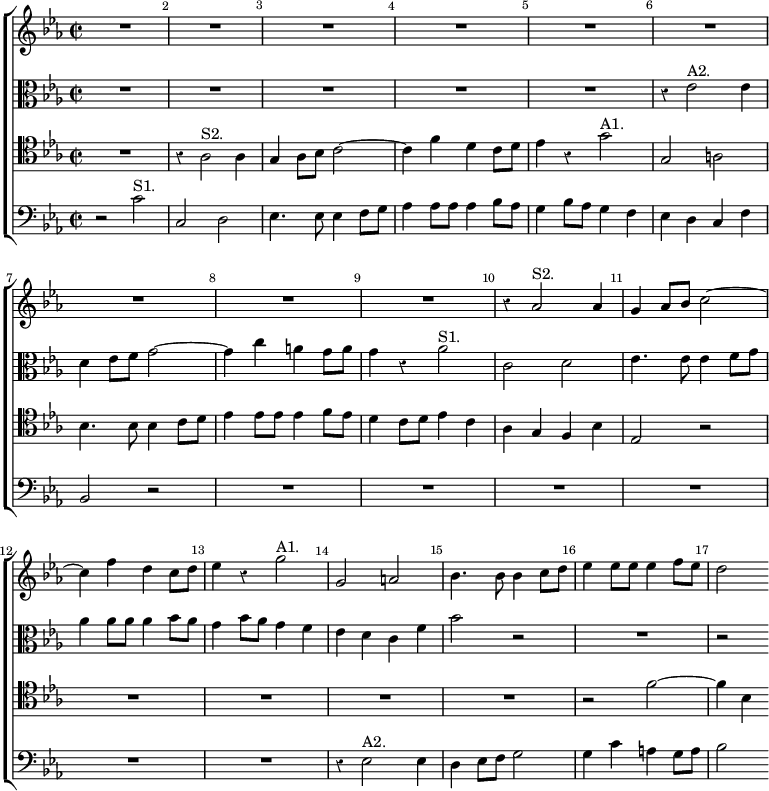Chap. XI.]
Fugue.
187
It looks at first sight as if the first subject extended to the sixth bar. That this is not the case is proved by the second subject. If bars 4 and 10 are compared, it will be seen that they are quite different. Now it is an important rule in writing a double fugue that, though the two subjects had better begin one after the other, they must always finish together. Bar 10 proves that the second subject ends on the first note of bar 4; consequently the first subject must end at the same point, and bars 5 and 6 must be regarded as codetta.
375. The exposition of a double fugue is sometimes arranged in quite a different manner, which will be best understood by an example.
Hummel. 2nd Mass.

